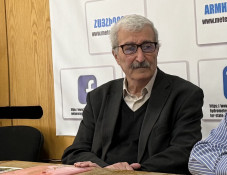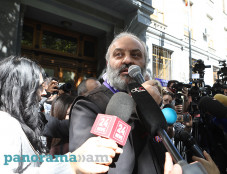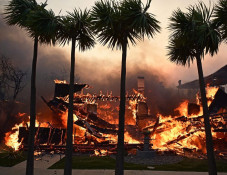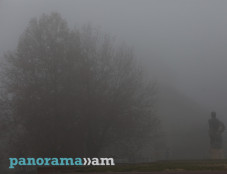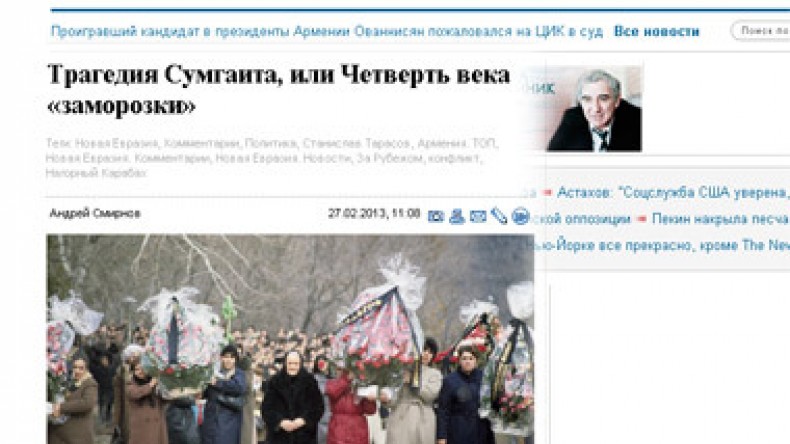
Twenty-five years ago, Sumgait became scene of bloody anti-Armenian riots
Twenty-five years ago, the seaside town of Sumgait in Azerbaijan, then part of the Soviet Union, became the scene of bloody anti-Armenian riots in which at least 32 ethnic Armenians were killed, according to the official estimates, although some sources say that the real figure is much higher, the article of The Voice of Russia reads.
Radio station says, that a week before the riots, on February 20, 1988, the parliament of the Nagorno-Karabakh Autonomous Region with the predominately Armenian population petitioned to Moscow to be allowed to reunite with Armenia. That was the beginning of the ongoing territorial dispute over Nagorno-Karabakh, which led to a full-scale war between Armenia and Azerbaijan in 1991-1994.
When the Sumgait pogroms broke out, the authorities first branded them as hooliganism and did not intervene. Troops were brought in only the following day but observed neutrality until they themselves were attacked by rioters. Tougher measures followed. The riots were quelled and a curfew imposed. Within days, however, anti-Armenian violence swept Baku, Kirovabad, Hanlar and other Azerbaijani cities. The conflict snowballed and in 1990 the Karabakh war began.
The article says that tens of thousands were killed and hundreds of thousands became refugees. In May 1994, an indefinite ceasefire was signed, putting an end to the bloodshed. A quarter of a century since, that ceasefire still holds.
The Sumgait events were the first symptoms of the looming collapse of the USSR, says Alexander Krylov, a Caucasus expert at the Institute of World Economy and International Relations. "The central government was in a deep crisis and losing control at all levels – republican, regional and nationwide. And bursting from beneath were destructive processes as nationalistic-minded forces sought to achieve their goals. In Azerbaijan, it led to violence in Sumgait and other cities."
Political scientist Stanislav Tarasov thinks that Nagorno-Karabakh conflict can be resolved, though not in the near future. "There were other forces playing in the region and destabilizing the situation. And now a solution looks more promising than ever. The first scenario is that both sides will demonstrate good will and opt for peaceful coexistence. But the current policies of Armenia and Azerbaijan make that scenario unlikely. It is also possible that, given the geopolitical fragmentation of the region, the independence of Nagorno-Karabakh may, after all, eventually be recognized."
The Voice of Russia says that the Sumgait tragedy was mentioned at a UN Security Council meeting this week. Top UN officials highlighted the need for joint efforts to protect civilian in armed conflicts. The Armenian side reaffirmed its commitment to settling the Karabakh conflict peacefully and in keeping with international law.
On 26-29 February 1988 in terms of actual complicity of local authorities and inaction of the USSR government mass pogroms of civilians were organized in Sumgait city of Azerbaijani SSR, accompanied with unprecedented brutal murders, violence and pillaging against the Armenian population of the city. Armenian pogroms in Sumgait were carefully organized. At the meetings, which began on February 26 in the central square, city leaders openly called for violence against the Armenians.
On February 27 protests which were attended by hundreds of rioters turned into violence. Armed with axes, knives, specially sharpened rebar, rocks and cans of gasoline and with the pre-compiled lists of apartments where Armenians lived the rioters broke into the houses, turning everything upside down there and killing the owners. In the same time, people were often taken out to the streets or to the courtyard for jeering at them publicly. After painful humiliations and torture the victims were doused with gasoline and burnt alive.
On February 29 army troops entered Sumgait but without an order to intervene. Only in the evening, when the mad crowd began to attack the soldiers the military units took up decisive steps.
The exact number of victims of Sumgait pogroms is still unknown. According to official data, 32 people were killed; however there is ample evidence that several hundred Armenians have been killed in the city in three days. There is also evidence that the riots were coordinated by KGB in Azerbaijan. Executioners of Sumgait were subsequently declared as national heroes of Azerbaijan.
Documentary “Ordinary Genocide: Sumgait 1988”
Newsfeed
Videos





